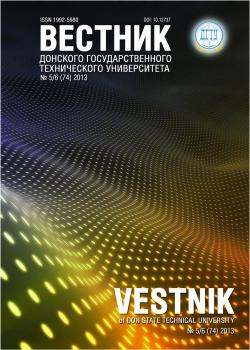Bryansk, Bryansk, Russian Federation
The study object is a “wheel — rail” system. The subject is the computer simulation of the system elements wear. The work objective is to investigate the wheel and rail wear dependence on the kinetic performance parameters. The problems solved here are analysis of the earlier proposed mathematical functions de-scribing the kinetic performance for the presence of extremes, the functional behavior (growth, decrease, monotonicity, and uni-modality, etc.) in various parameter ranges; implementation of the computer simulation of the wheelpair movement by rail with the quantitative estimation of the wheel and rail wear with vari-ous kinetic performance parameters; to determine qualitative influence patterns of the kinetic wear performance. The simula-tion is fulfilled by the software package “Universal Mechanism”. As a result, values of various characteristics related to wear (power, total and specific friction work) under different condi-tions of the kinetic friction performance are obtained. The con-clusions are as follows. The kinetic friction performance parame-ters must be considered as they can significantly affect the wear within the range of the actual operating conditions in the course of the computer simulation. Under some conditions, there are cases when an increase in the friction coefficient is accompanied by a decrease in depreciation. It is proposed to continue the re-search in two main areas: determining the influence patterns on the kinetic friction performance and wear of the multiple actual factors, and studying the dynamic (at variable slip velocity) fea-ture of friction effect on the parameter wear through the same procedure.
friction, wear, kinetic characteristic, slip velocity, friction coefficient, specific work, wheel, rail, computer simula-tion, factors.
Износ колес и рельсов представляет собой очень важную и актуальную проблему, от которой во многом зависит эффективность работы железнодорожного транспорта. Ежегодные потери в масштабе железных дорог России исчисляются миллиардами рублей [1]. Основным практическим методом борьбы с износом является лубрикация, направленная на снижение трения в системе «колесо — рельс». Однако таким образом решается лишь часть проблемы и далеко не всегда достигаются желаемые результаты. Большое значение имеет возможность прогнозирования износа и его изменений при осуществлении различных мероприятий. Такую возможность дает компьютерное моделирование взаимодействия железнодорожного экипажа и пути. Одним из хорошо известных и многократно проверенных инструментов такого моделирования является программный комплекс «Универсальный механизм» (далее «УМ»), разработанный в Брянском государственном техническом университете коллективом под руководством профессора Д. Ю. Погорелова. Описание возможностей УМ представлено в [2–5]. Комплекс, в частности, позволяет моделировать движение экипажа на прямых и кривых участках пути, вычислять различные величины, связанные с износом колес и рельсов.





